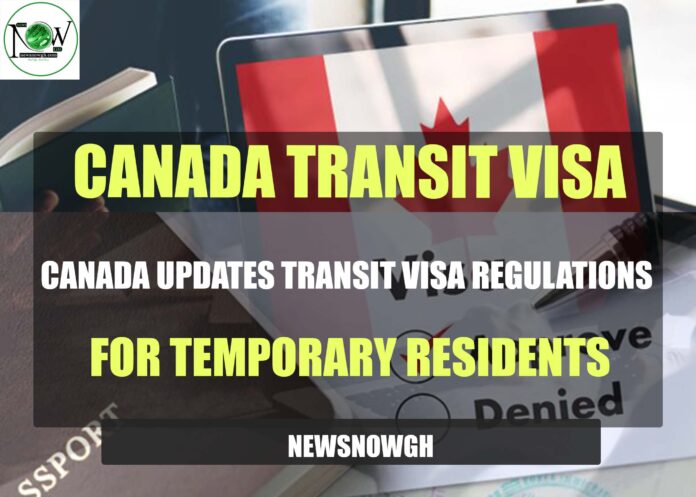Canada Updates Transit Visa Regulations for Temporary Residents | Canada Transit Visa
Guidelines have been released by Canada for foreign nationals who wish to pass through the nation en route to another location. Travelers must be on a connecting aircraft, have documentation that they will be transiting within 48 hours, and have a valid visa for their final destination in order to be eligible for a Canadian transit visa.
Regarding the eligibility of foreign nationals who are temporary residents for transit visas, Canada has provided significant clarifications. It’s important to know the regulations and criteria if you’re traveling through Canada but aren’t planning to stay there permanently, especially if you need a visa just to enter the country.
Overview: Canada Transit Visa
When a citizen of a country exempt from visa requirements is unable to get an Electronic Travel Authorization (eTA), they must apply for a fee-exempt temporary residence visa to enter Canada. With this visa, visitors can pass through Canada en route to another nation without having to enter the nation itself.
When traveling by plane via Canada, you must have an Electronic Travel Authorization (eTA) if you don’t need a visa. It is good for five years, or until the expiration date of your passport, whichever comes first.
Understanding the Temporary Resident Visa (TRV)
In order to verify that you fulfill the admission conditions for temporary residency in Canada, Canadian visa offices will issue you a Temporary Resident Visa (TRV) and place it in your passport.
It’s important to remember, though, that obtaining a TRV does not ensure admission to Canada. When you arrive at a Canadian port of entry, officials from the Canada Border Services Agency (CBSA) will decide whether to allow you admission.
Eligibility for a Canadian Transit Visa
For foreign nationals to be qualified for a transit visa, they need to:
- Provide documentation attesting to your 48-hour or shorter transit through Canada between two international flights.
- Imagine yourself as a traveler on an international airplane that stops in Canada en route to another nation.
- Possess a current visa to the country of destination.
- Travelers must also persuade the immigration officer that their only intention is to pass through Canada while seeking a transit visa.
Single or Multiple-Entry Transit Visas
The best thing about Canada’s transit visas is that they are entirely free for both single- and double-entry travel. Travelers will find the process more accessible as biometrics are not subject to fees even if applicants must submit them.
Key Requirements for Transit Visa Holders
- Transit Purpose: Passengers must persuade immigration officers in Canada that their only intention is to pass through the country.
- Visa Type: Single- or double-entry transit visas are available.
- Biometrics: Although biometric data is needed, transit visa holders are free from paying this cost.
U.S. Transit Exemption
Travelers holding valid temporary resident or non-immigrant visas to the United States are exempt. You do not need to produce biometrics if you are traveling through Canada to or from the United States for less than 48 hours.
China Transit Program and the Transit Without Visa Program
Under the China Transit Program and the Transit Without Visa (TWOV) Program, Canada provides extra exemptions. As long as they fulfill certain requirements, these let some foreign nationals travel through Canada on their way to or from the United States without requiring a Canadian transit visa.
Final Thoughts
To prevent any travel interruptions, make sure you are completely informed of these amended laws if you intend to transit through Canada. Verify your visa and entry criteria again, taking into account your country of origin and intended route of travel.
Follow us on Newsnowgh.com to stay updated on the latest information regarding work permits, visa application processes, paths to permanent residency, and visa-sponsored employment.


